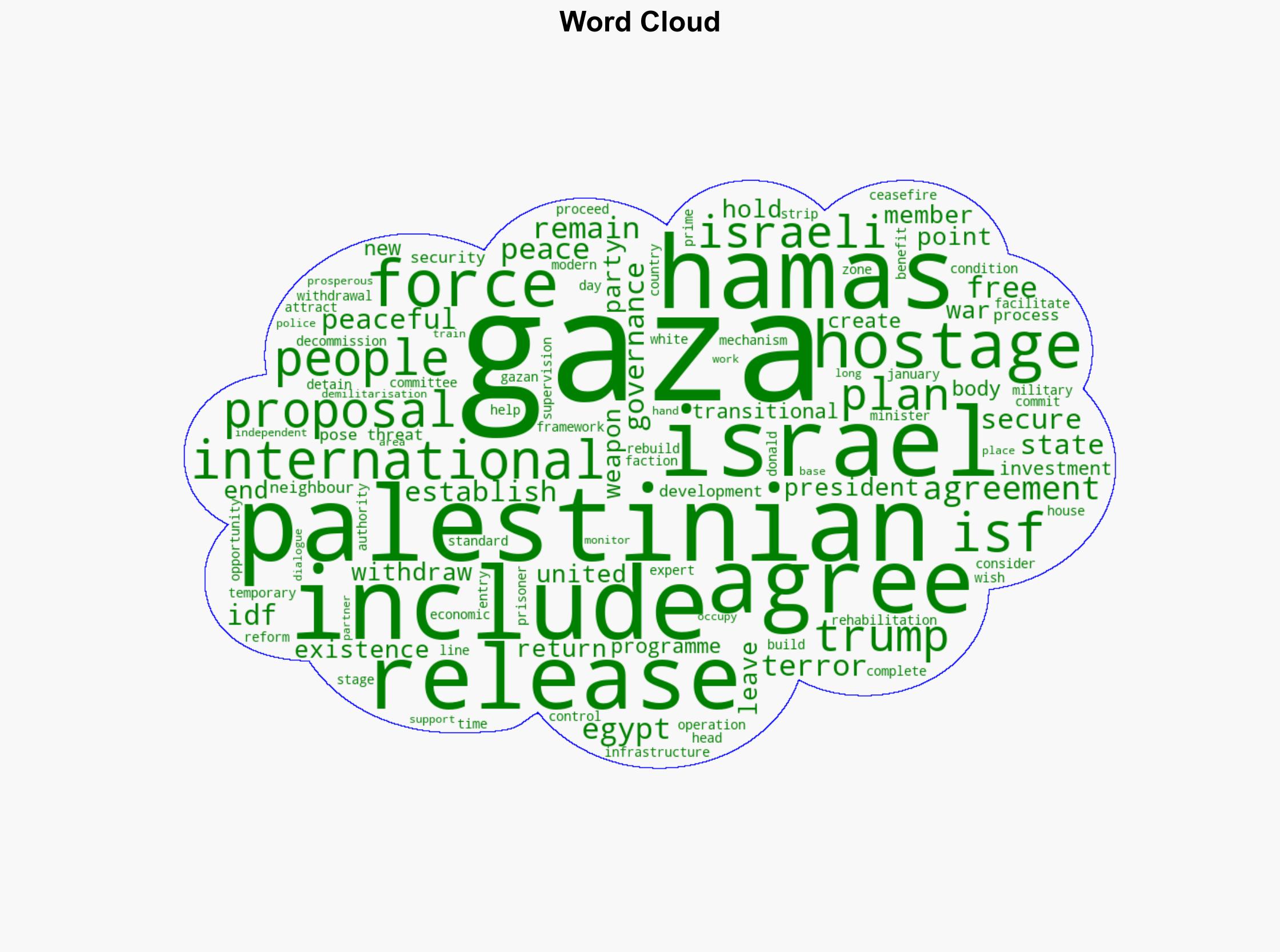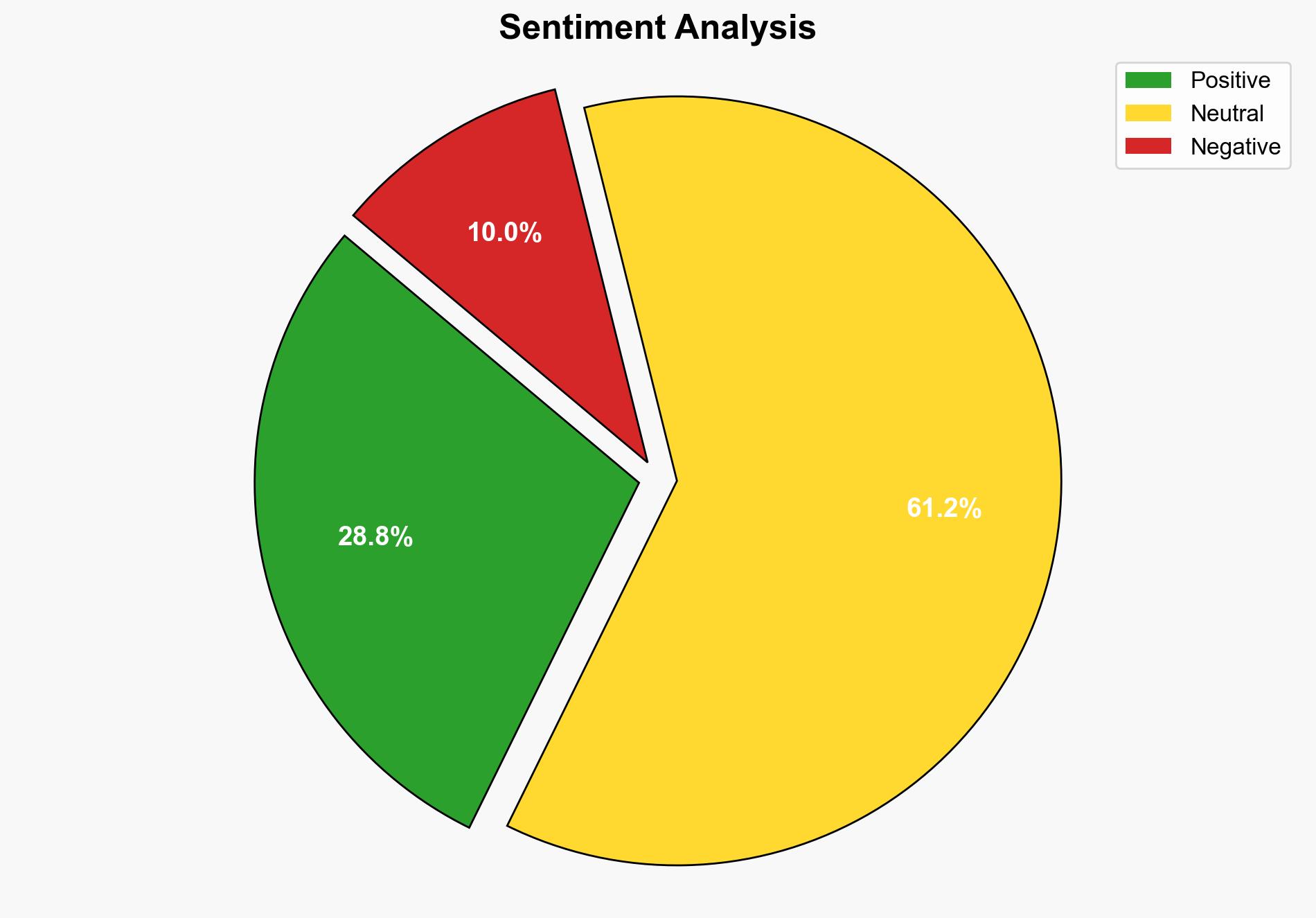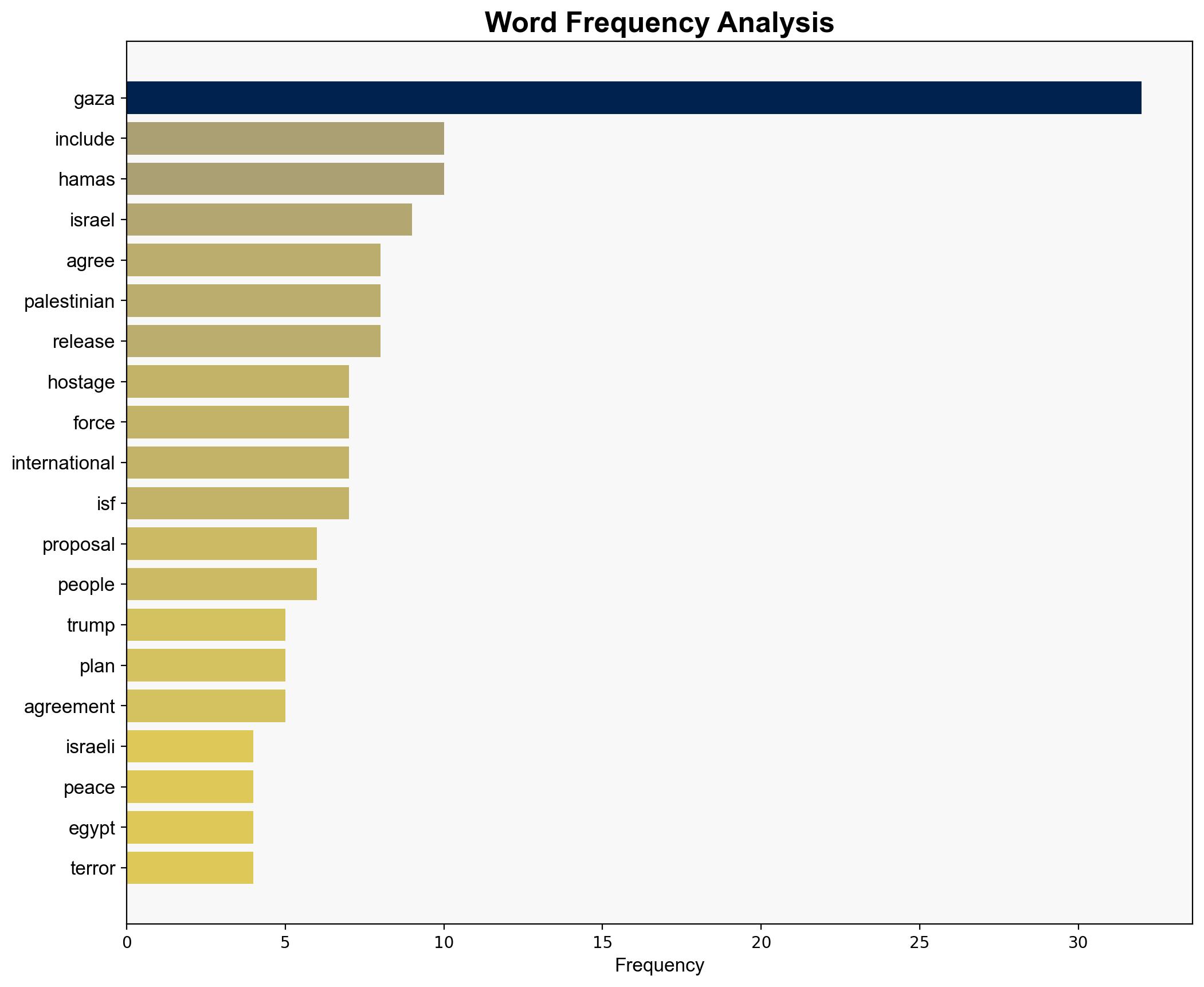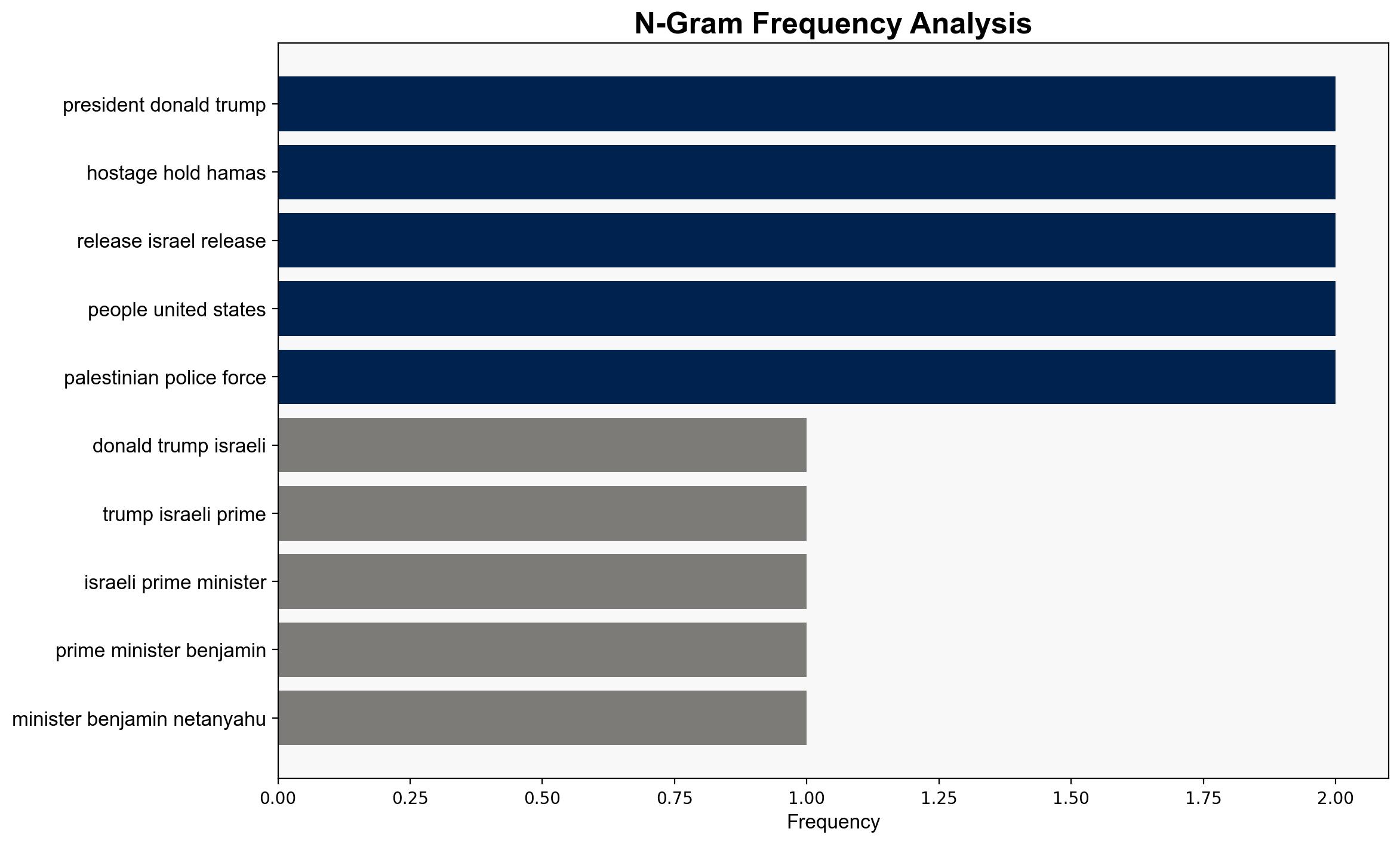Key points from US peace proposal for Gaza – RTE
Published on: 2025-09-30
Intelligence Report: Key points from US peace proposal for Gaza – RTE
1. BLUF (Bottom Line Up Front)
The US peace proposal for Gaza, involving a ceasefire, hostage exchange, and economic redevelopment, presents a complex and ambitious plan. The hypothesis that the proposal will lead to a sustainable peace is moderately supported, given the historical challenges and current political dynamics. The recommendation is to cautiously support the initiative while preparing for potential setbacks due to entrenched positions and regional instability.
2. Competing Hypotheses
1. **Hypothesis A**: The peace proposal will lead to a sustainable resolution in Gaza, with successful disarmament of Hamas and economic redevelopment.
2. **Hypothesis B**: The proposal will fail due to lack of trust, insufficient incentives for Hamas, and geopolitical complexities, leading to a temporary cessation of hostilities but no long-term peace.
Using the Analysis of Competing Hypotheses (ACH) 2.0, Hypothesis B is currently better supported. Historical precedents and the entrenched positions of key stakeholders suggest significant barriers to achieving the proposal’s objectives.
3. Key Assumptions and Red Flags
– **Assumptions**: The proposal assumes that economic incentives and international oversight can effectively disarm Hamas and stabilize Gaza. It also presumes cooperation from all regional actors, including Egypt and Qatar.
– **Red Flags**: Lack of explicit commitment from Hamas and potential resistance from Israeli hardliners. The proposal’s reliance on international bodies may face bureaucratic delays and political resistance.
4. Implications and Strategic Risks
– **Economic**: Successful implementation could transform Gaza into a thriving economic zone, but failure may exacerbate poverty and instability.
– **Geopolitical**: The proposal could shift regional alliances and power dynamics, especially if perceived as biased towards one party.
– **Psychological**: The plan’s success hinges on changing long-standing perceptions and grievances, which is a significant challenge.
5. Recommendations and Outlook
- Engage in diplomatic efforts to build trust among stakeholders, particularly Hamas and Israel.
- Monitor implementation closely to identify early signs of non-compliance or sabotage.
- Scenario Projections:
- **Best Case**: Full implementation leads to peace and economic growth in Gaza.
- **Worst Case**: Breakdown of talks leads to renewed violence and regional instability.
- **Most Likely**: Partial implementation with sporadic violence and slow economic progress.
6. Key Individuals and Entities
– Donald Trump
– Benjamin Netanyahu
– Tony Blair
– Hamas
– International bodies (United Nations, Red Crescent)
7. Thematic Tags
national security threats, counter-terrorism, regional focus, economic development, peace negotiations




